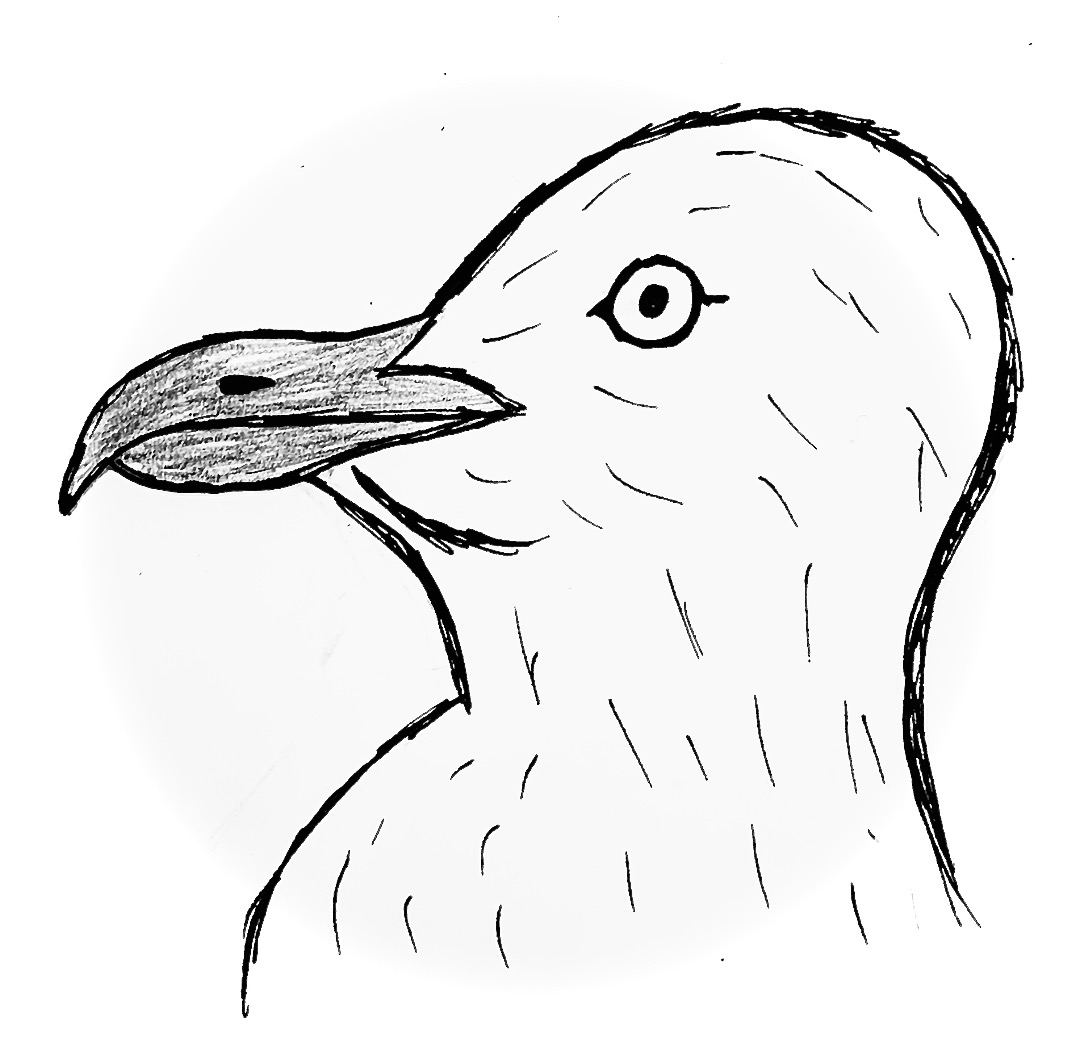Fog. A huge, murky curtain of it. After a tense moment, a steam boat emerges, chugging its way through the choppy waves as its sputtering engine growls and sooty smoke billows from its chimney. Its destination, as one might guess, is the lighthouse: a tall, dilapidated tower with a few measly outbuildings surrounded on all sides by desolate, wet rock. This is our bleak home for the next hundred and nine minutes—the fog barely ever lifts, replaced only by thrashing thunderstorms. We’re trapped in the grime and muck, in the lighthouse’s spiral staircase and under the leaking roof of the living quarters. As with his previous feature, The VVitch (2015), Robert Eggers has meticulously reconstructed a bygone era. This time, he throws us into the deep end of 1890s New England. Every prop, costume and set feels deliberately chosen to be as precise as possible; knowing Eggers’ fastidious style, it would be no surprise if some of what we see is the genuine historical artifact.
Braving these squalid conditions are Ephraim Winslow (Robert Pattinson) and Thomas Wake (Willem Dafoe). Winslow is a newly-crowned “wickie,” or lighthouse keeper, who is beginning his four-week shift of servitude under the strict command of the grizzled old-timer Wake. The pair could hardly be a worse match; while Winslow keeps to himself, muttering guarded responses, Wake is obnoxiously vocal, a gnarly stuck-record of sea dog sayings and Neptunian tirades. He’s Vincent Price meets The Simpsons’ Captain McCallister, a gloriously over-the-top mix that inspires both laughter and fear. Wake’s dialogue sparkles, as entertaining to listen to as it is period-authentic, and there’s probably no better actor for the role than Dafoe. His theatre background lends itself to the salty monologues and the two-handed nature of the film while Pattinson, currently flourishing in art-house pictures, holds his own with a beguiling performance that appropriately balances Dafoe’s Moby Dick madness.
Eggers and cinematographer Jarin Blaschke stipulated The Lighthouse be shot on 35mm black-and-white film stock, and this visual treatment is utterly transportive. He’s re-teamed with cinematographer Blashke, whose lighting perfectly elevates the claustrophobia and intensity of Winslow and Wake’s stint on the remote rock. Shot in the antiquated “movietone” aspect ratio of 1.19:1, the film appears almost square, literally boxing-in our two leads to their gloomy lodgings. As they slink around carrying out their daily duties, they dip in and out of inky-black shadows and haunting brightness. Wake is often bathed in the enchanting glow of the Fresnel lamp, of which he considers himself the rightful guardian. Winslow, meanwhile, can only watch from beneath. The compressed frame leaves little room for our eyes to wander, forcing us to confront a plethora of hallucinatory images. Eggers’ brilliant script, co-written with his brother Max, contains several moments that would make Lovecraft himself shudder.
Another veteran from The VVitch crew is musician Mark Korven, who puts his Frankensteined soundscape-maker The Apprehension Engine to evocative use once again. Combined with the wailing winds and the crashing of waves, it’s impossible to tell where Korven’s score begins and ends; a spine-tingling foghorn bellows so often that it might as well be considered an instrument, part of the living and breathing fabric of the world. Though it is marketed with the label of “horror,” the term hardly does justice to the complex, off-kilter atmosphere of The Lighthouse. Drawing from ancient myths and Jungian psychology, and evoking the dramas of Swedish filmmaker Ingmar Bergman, Eggers has conjured a spellbinding experience that plunges us into murky depths of humor, dread, and sordid seafaring legends. He finds a place for fart jokes alongside harrowing tension, and it’s this kind of unconventional mix that makes The Lighthouse one of the year’s most fascinating films.

